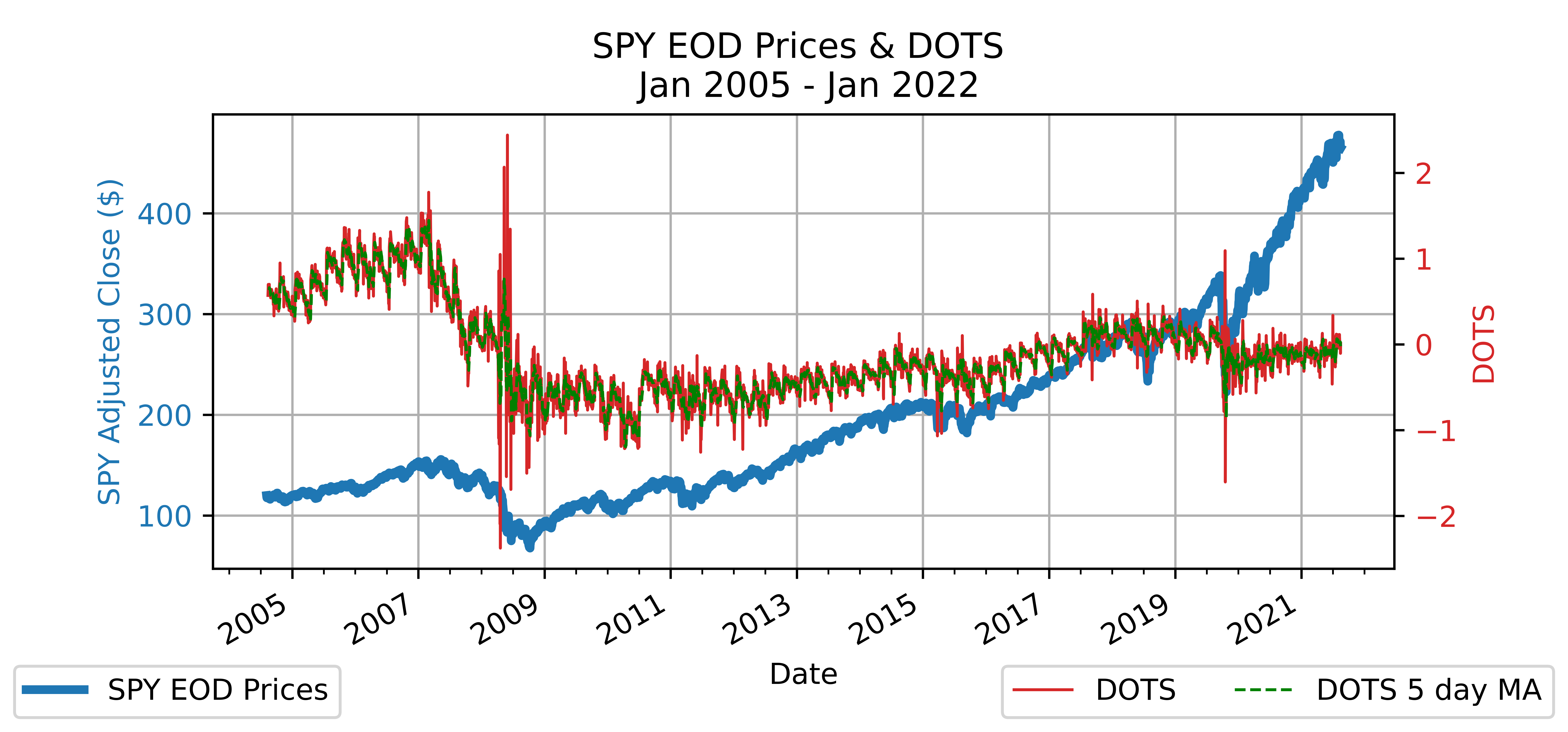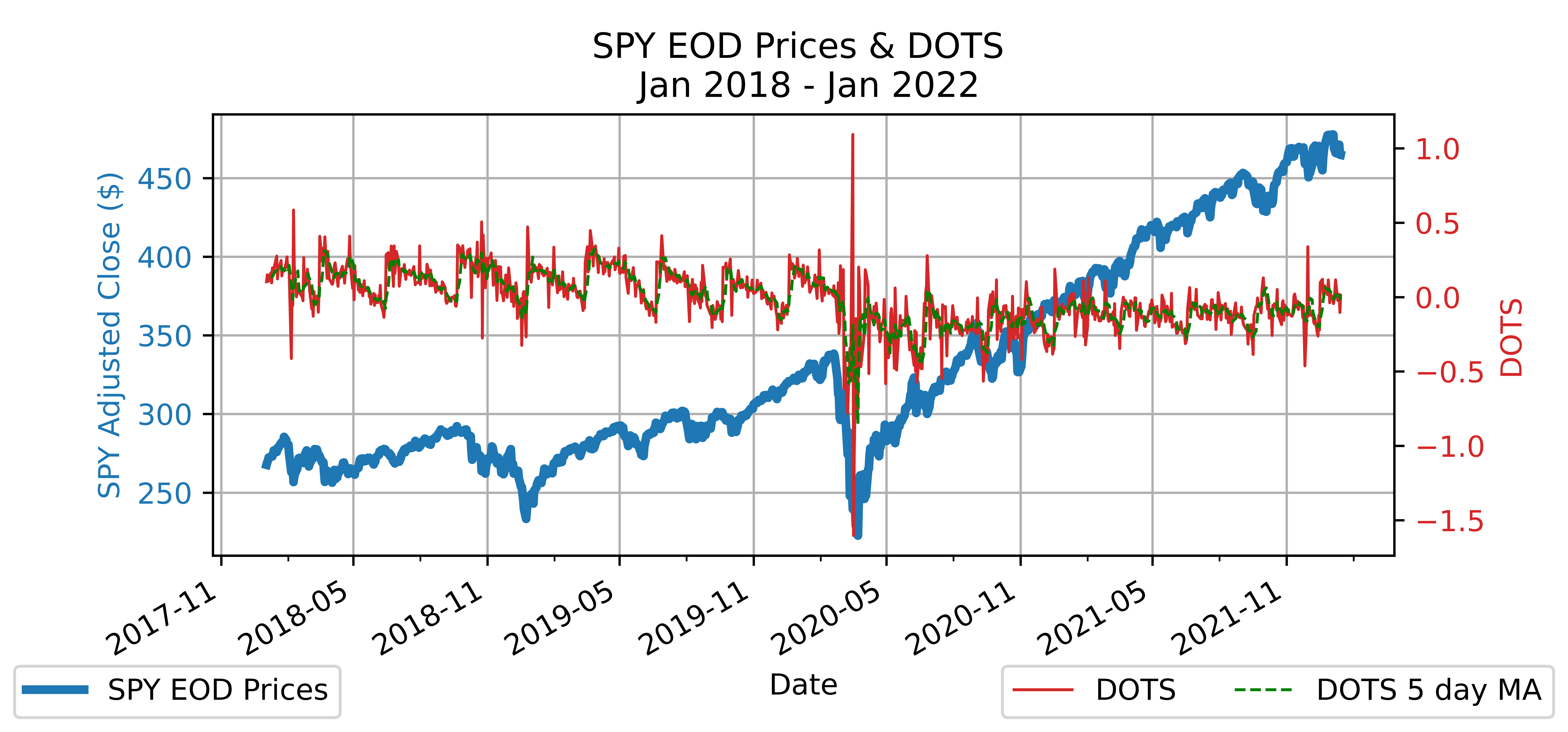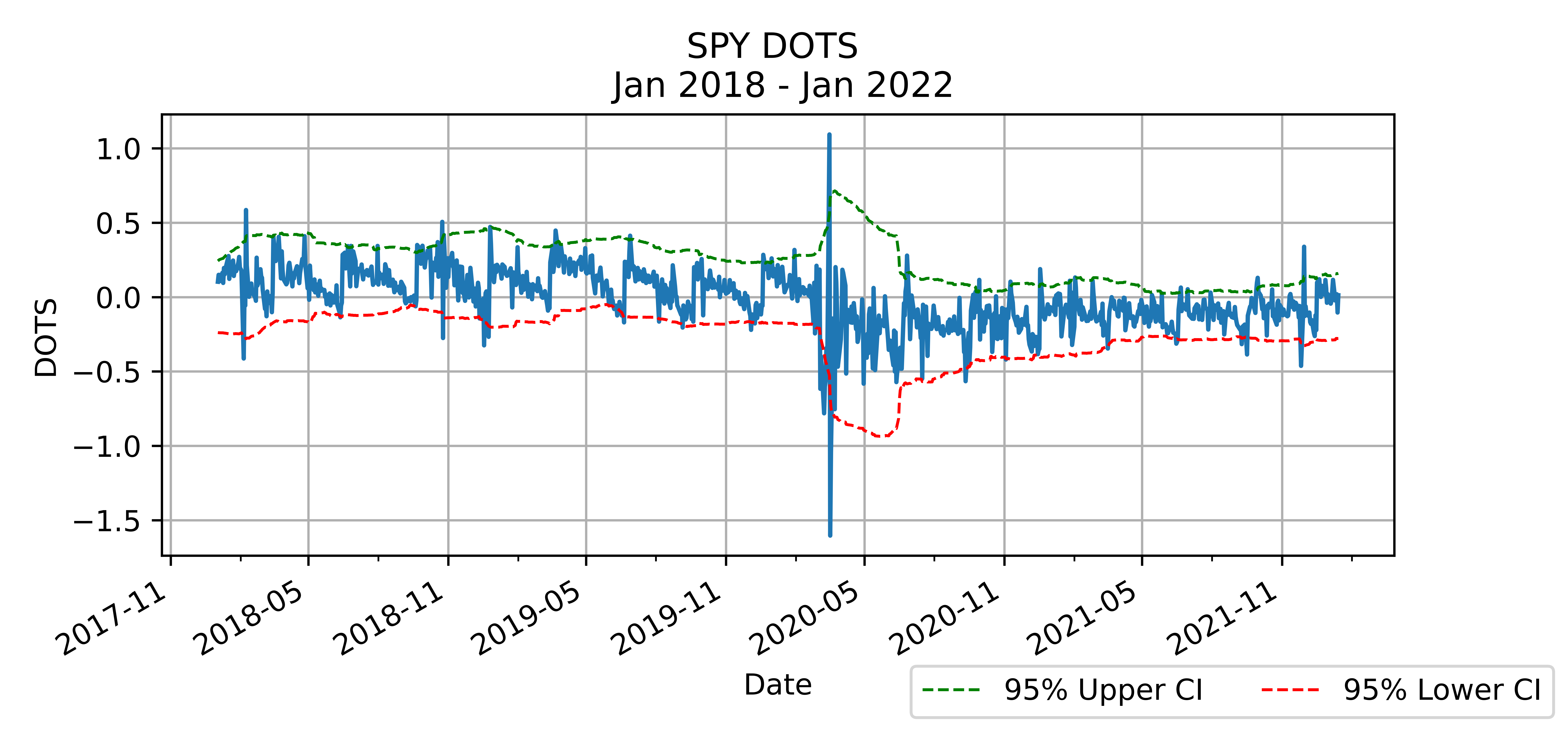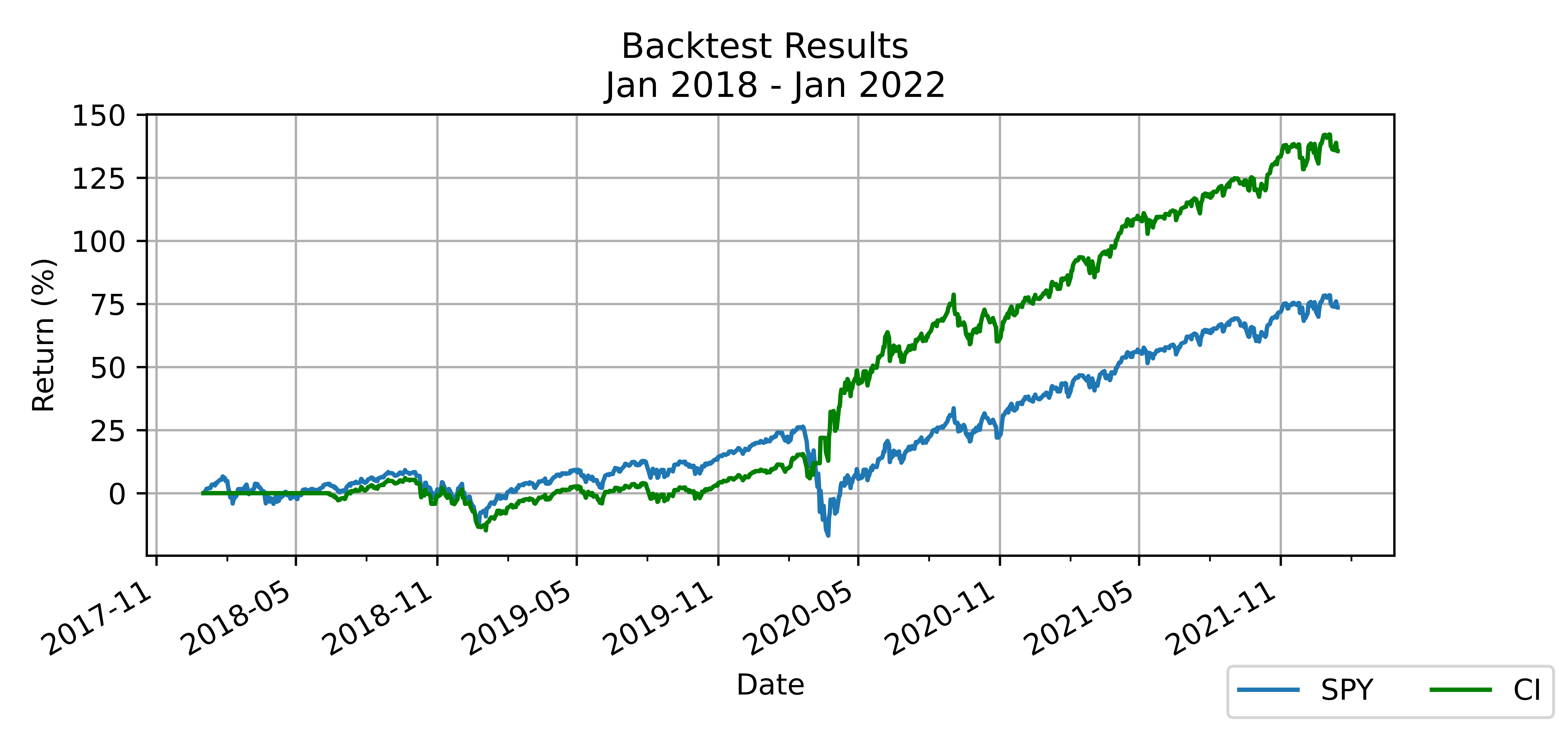Option Implied Stock Price vs. Actual Traded Stock Price
Frank Ferstler, Nicholas Pezolano
2022-01-20
Stock and options markets can disagree about a stock’s value because of informed trading in options and/or price pressure in the stock. This difference between the options implied stock price and the actual traded stock price (DOTS) can give insight into the markets view on the expected future price and thus can be utilized to predict the underlying stock return.
First Glance
As with many analyses, the first step is to stare at the big picture and see if any patterns stick out to the eye. Below is the end of day adjusted close prices for SPY (blue line) along with the DOTS analytic (red line) for the period of January 11th 2005 through January 14th 2022. The DOTS 5 day moving average (dashed green line) is also plotted which can provide some insight into how sensitive the metric can be on a day to day basis.

At first glance, we see some large spikes in 2008, the financial crisis, and early 2020 when COVID-19 challenged the world to evolve how we act and work. Also we see that DOTS overall tends to hover largely between 1 and -1 with a couple spikes above 2 and below -2. In the beginning of the window, leading up until the crash of 2008, the DOTS level was a little high and trending upwards and then around 2007 starts to decline until we see some massive spikes in early 2008. Similarly we see that the DOTS level, albeit lower than when leading into the financial crisis, is trending upwards but flattens out with some increased spikes in 2018 when the market saw volatility and a smaller crash driven by many factors such as the trade war with China. The DOTS level then becomes less volatile leading into COVID-19 where we see some very large spikes. This story line appears to provide evidence that DOTS may be a useful indicator for how SPY trends over time.
Closer Look
To take a closer look to see if the initial intuition holds water, at least by eye, we hone in on a smaller window that captures some of the key points we have discussed above. Below is the same picture as above but for the window starting January 2018 and ending January 2022.

Strategy
Having stared at many charts similar to this (probably more than anyone ever should), it seems the metric is relatively stationary so we will perform an Augmented Dickey-Fuller Test to determine if it is without a unit root (aka stationary). The more negative the ADF Statistic is (smaller the P - Value) the more strongly you reject the null hypothesis that the series contains a unit root.
| ADF Statistic | P - Value |
|---|---|
| -3.95085 | 0.00169 |
Since DOTS is stationary over this window, the moments of the series can be useful as an indicator for when the level is in a zone that is statistically significant compared to its history. Using a 3 month window, which can be viewed as earnings to earnings, should provide sufficient points to generate the confidence interval (CI) yet be short enough in time to not allow for too much weighting of historical events to drag into the statistics. A lot of further research and testing can be done on this alone but will not be done here in this post. Below is the DOTS analytic with its corresponding 95% CI Upper Bound (green dashed line) and its Lower Bound (red dashed line).

Using this level, a sparse number of points actually breach these thresholds over time. We will perform a backtest utilizing points that are above (below) the confidence level as a buy (sell) signal.
Backtest

Performance of this strategy for this period was favorable compared to simply buying SPY at the beginning of the period and holding until the end of the period. In the first 3 months of the window, the CI returns are completely flat as the strategy requires 3 months of data before computing the CI to use as a signal. Following the first 3 months the strategy trends closely with SPY and then during the COVID-19 crash, the indicator flashed sell to short SPY which led to a profit while SPY aggressively fell. Then at the bottom the indicator flashed to go long so the short position was closed and a long position was entered into which then continued to trend with SPY. Below please find some statistics on the strategy (95% C.I.) illustrating that this was a profitable and successful strategy.
| Strategy | Buy & Hold | 95% C.I. |
|---|---|---|
| Total Return | 73.60% | 135.59% |
| Sharpe | 0.76 | 1.36 |
| Sortino | 1.13 | 2.28 |
| Max Drawdown | -34.18% | -19.58% |
| Yearly Mean | 17.58% | 30.41% |
| Yearly Vol | 14.34% | 27.90% |
| Best Year | 29.26% | 65.50% |
| Worst Year | -2.18% | -2.18% |
For more information on other historical options datasets and analytics, you can contact us at sales@newmarkrisk.com